Best AI Writing Tools are no longer just “nice to have” — they’re now essential if you want to write faster, publish consistently, and maintain a strong, recognizable voice across everything you create. As a content creator, marketer, or business owner, you’re expected to produce more content than ever. Blog posts, landing pages, email newsletters, social media captions, product descriptions, scripts — the list doesn’t slow down. And doing it all manually can easily lead to burnout or inconsistent quality.
That’s where AI writing tools step in. Instead of replacing your creativity, they support it. They help you brainstorm ideas when you’re stuck, outline articles in a logical way, draft readable copy, and refine tone so your writing still sounds like you. Some even analyze SEO intent, suggest keywords, build content briefs, or repurpose one piece of content into multiple formats — saving you hours every single week. In team-based content creation environments, integrating expert insights for project success can help streamline communication, task planning, and consistency across roles. With structured advice on collaboration and project alignment, such resources support smoother handoffs between writers, editors, and strategists—ensuring efficiency without sacrificing content quality.
But not all AI writing tools are designed for the same job. Some are better for storytelling. Some for marketing. Some for SEO. And some for polishing AI text so it feels genuinely human.
In this guide, you’ll learn exactly which tools to use — and when — so you can scale your content smarter, not harder.

Best AI Writing Tools
AISEO – Best AI writing tool for SEO-driven, rank-ready content
Humanize AI – Best for making AI drafts sound naturally human
ChatGPT – Best for fast brainstorming, outlines, and multi-format drafts
Grammarly – Best for final polishing, clarity, and tone consistency
QuillBot – Best for paraphrasing, summarizing, and citation cleanup

*Pricing changes; confirm the latest on each website before you publish pricing pages.
1) AISEO — Best AI Writing Tool for SEO-Driven Content
If your goal is to write content that actually ranks, AISEO is easily one of the best AI writing tools you can use. Unlike most AI writers that simply generate text, AISEO is built with search engine optimization at the core — meaning every piece of content you create is guided by real SERP data, keyword relevance, and readability signals that Google cares about.
When you enter your topic, AISEO analyzes the top-ranking pages for that exact keyword. It shows you:
- Which keywords and entities must be included
- How long your article should be
- How to structure headings for maximum clarity
- What talking points are helping competitors win rankings
Instead of guessing, you’re writing with search intent alignment, which is the main factor that determines whether your content ranks or gets buried.
And when your draft is ready, AISEO’s AI Humanizer helps fix robotic phrasing, making your SEO content sound natural and engaging — something Google is increasingly rewarding.

Where AISEO Helps You Most
- Long-form blogs designed for ranking (1,500–3,000+ words)
- Topic clusters + topical authority building
- Content refreshes to revive outdated posts
- Multilingual SEO content when expanding into new markets
Key SEO-Focused Features
1. SERP-Based Keyword Suggestions
AISEO doesn’t guess what keywords might work — it studies the top-ranking pages on Google for your topic and pulls the exact phrases and search language your audience is already using. This ensures your content aligns with real user demand instead of relying solely on keyword tools. When you incorporate these SERP-backed terms naturally, your pages become more relevant in the eyes of Google — increasing your chances of ranking on page one.

2. Entity + Semantic SEO Guidance
Modern SEO is about context, not just keywords. AISEO guides you on which entities and supporting concepts Google expects to see in a well-rounded article. This helps you go beyond surface-level writing and produce content that demonstrates true topical depth. The more complete and connected your article appears, the more confidently Google can rank it — often boosting not only your main keyword but related secondary keywords too.
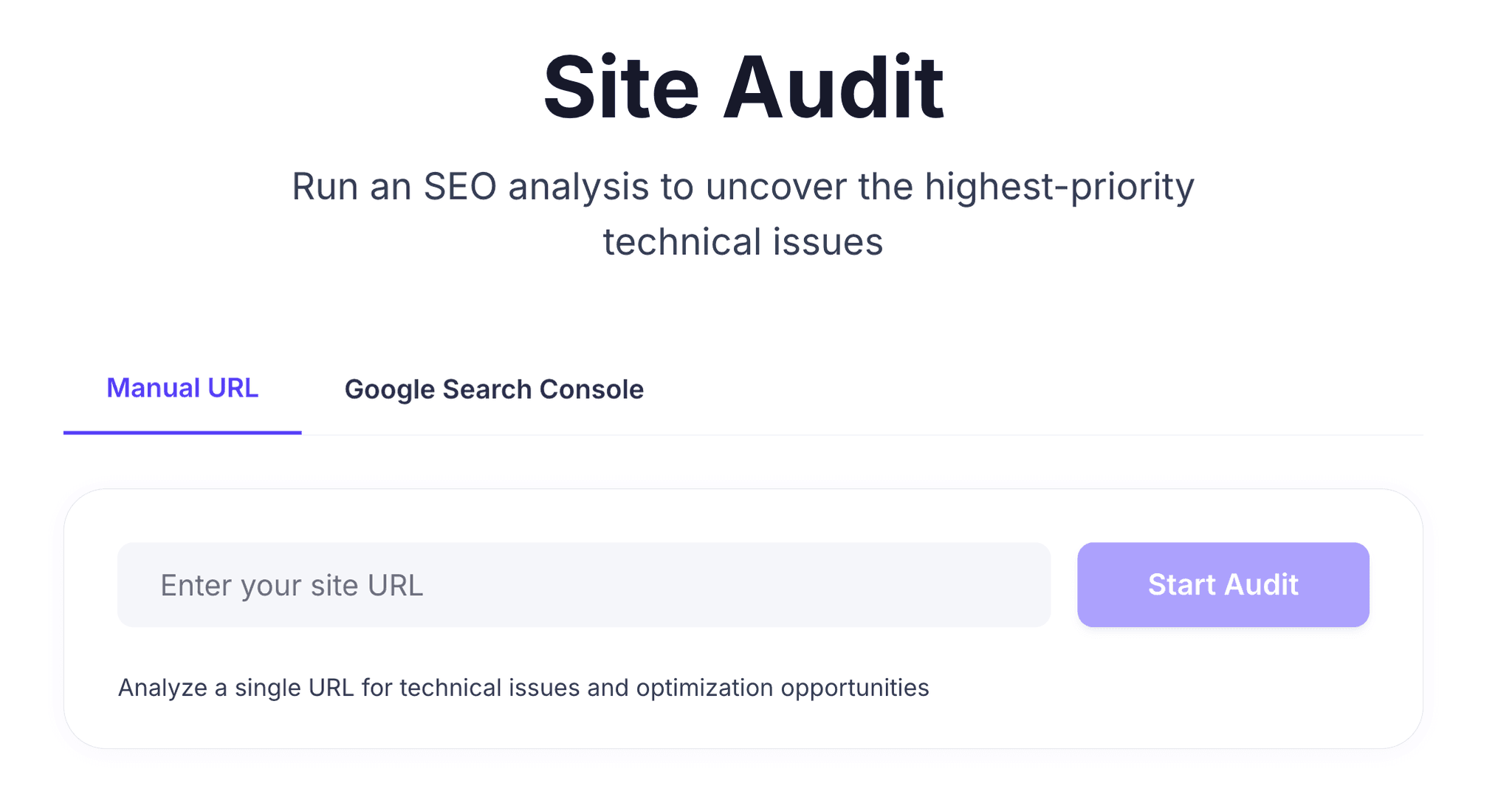
3. Search Intent Classifier
Every keyword reflects why someone is searching — to learn, compare, or make a decision. AISEO identifies the intent behind your topic, ensuring your content matches what the reader expects. If searchers want a how-to, you provide steps. If they want product comparisons, you focus on features and benefits. When your content aligns with intent, users stay longer, bounce less, and trust your page more — all of which send strong positive ranking signals to Google.
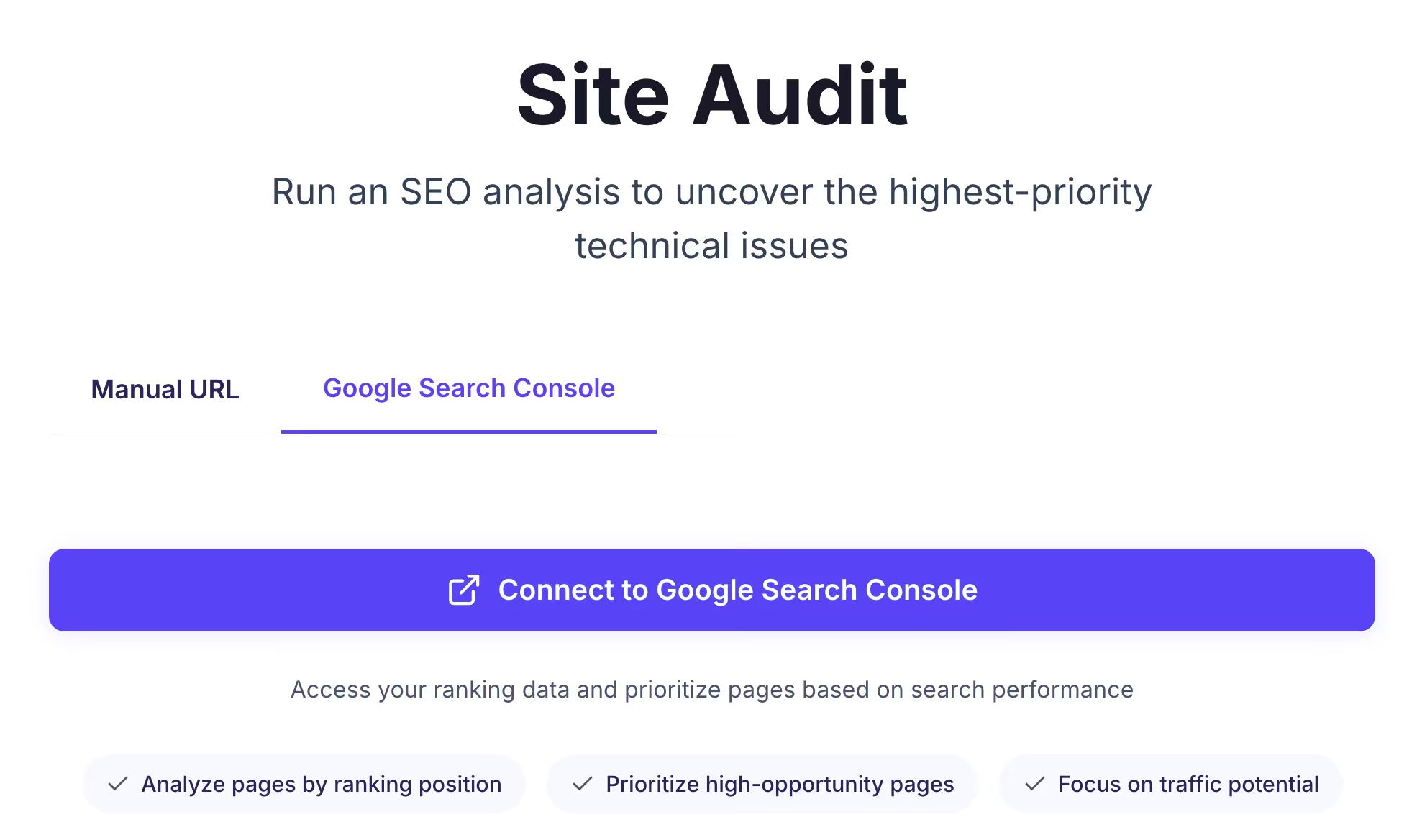
4. Readability & Structure Scoring
Even the best keywords won’t help if your content feels hard to read. AISEO evaluates your writing for clarity, sentence pacing, paragraph structure, and logical flow. It helps you create content that is easy to scan, enjoyable to read, and engaging from start to finish. This improves your dwell time, average scroll depth, and user experience, which are core elements Google rewards when deciding which pages deserve top placement.

Pricing

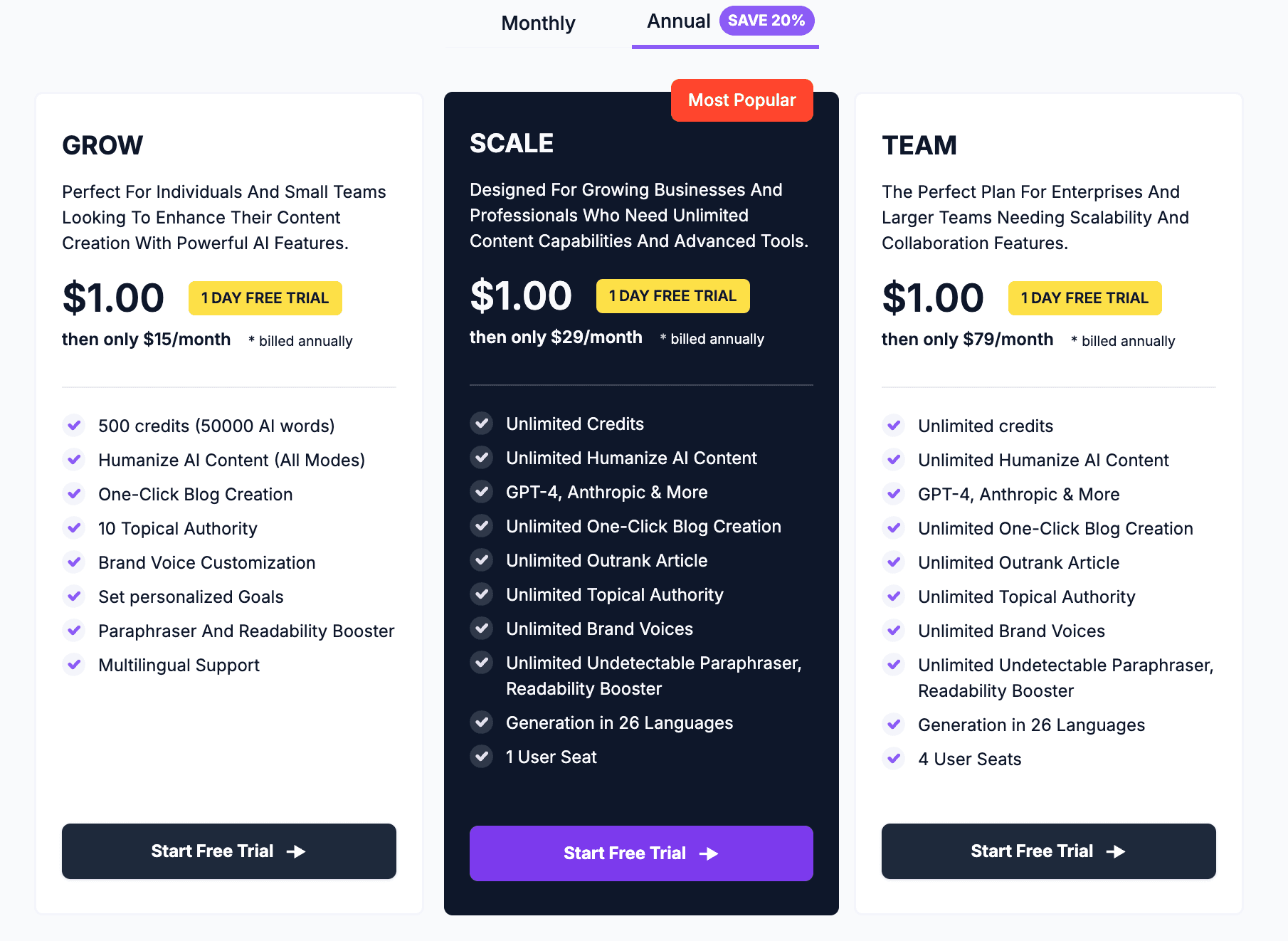
2) Humanize AI — Make AI Drafts Read Like You
Humanize AI earns its place among the best AI writing tools because it solves the biggest problem with AI-generated content: it sounds like AI. Even when the wording is correct, the rhythm, sentence variety, and emotional tone can feel flat or mechanical. It rewrites your draft so it sounds like a real human wrote it — while keeping your meaning, structure, and key SEO terms intact.
This is crucial because Google increasingly rewards content that reads naturally and conversationally, not overly polished or formulaic text patterns commonly associated with AI outputs.

Where Humanize AI Helps You Most
You’ll benefit most from Humanize AI when:
- Your draft feels stiff, repetitive, or “AI-obvious” It adds rhythm, variety, and flow — instantly.
- You're delivering client or executive-facing content Tone accuracy becomes critical.
- You're publishing SEO content and need to avoid direct AI detection It reshapes sentence construction, not just vocabulary.
- You need to maintain formatting Upload DOC / PDF → get a humanized version with layout preserved.
This makes it ideal for:
- Blogs
- LinkedIn posts
- Email sequences
Key Features That Improve Natural Voice & Credibility
1. Humanize Text & File Upload
You can paste text or upload full documents, and it rewrites everything while preserving structure — headers, tables, spacing, references, links. → No formatting cleanup needed afterward.

2. Tone & Readability Controls
You choose how you want the content to sound — casual, friendly, professional, academic, or sales-driven. → The output matches your personality or brand voice, not generic AI tone.

3. Keyword Freeze Protection
You lock your main keywords before humanizing. → It smooths flow around your SEO terms without changing them, preserving ranking ability.
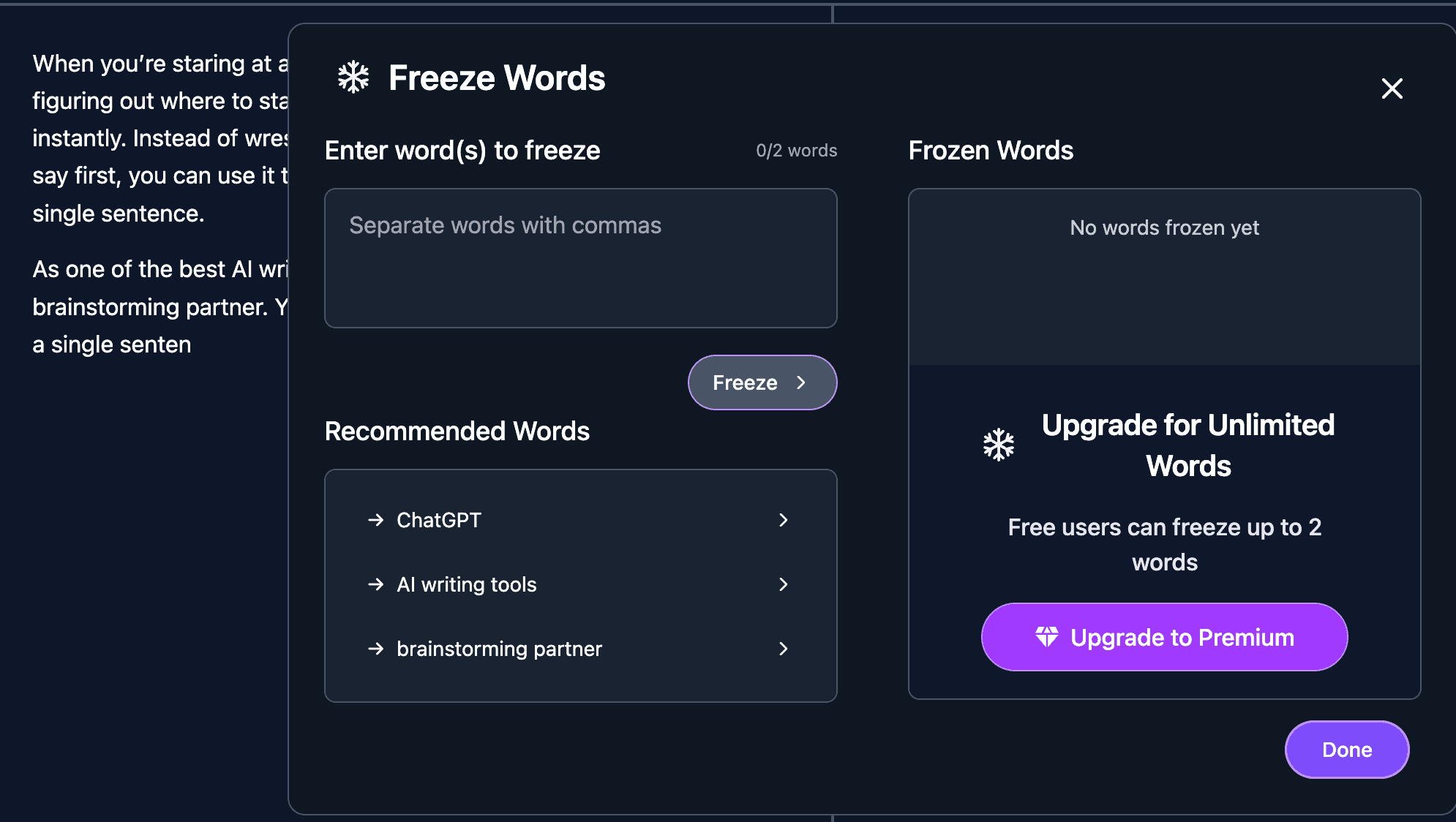
4. AI-Detection & Plagiarism Pass
The tool reshapes sentence structure rather than just swapping synonyms. → This is why it passes GPTZero, Copyleaks, OriginalityAI, Turnitin, etc.
Why Humanize AI is Different From Simple Rewriters
Most paraphrasing tools just “reword” text. Humanize AIreconstructs the language pattern and pacing:
- More sentence length variation
- More natural transitions
- More contextual nuance
- Less predictable phrasing
It doesn’t just try to hide AI — it makes your writing feel alive.
This is the difference between sounding correct and sounding human.

Humanize AI Text Pricing


3) ChatGPT — The Fastest Way to Go From Idea to First Draft
When you’re staring at a blank page, nothing feels harder than figuring out where to start. ChatGPT solves that problem instantly. Instead of wrestling with structure, angles, or what to say first, you can use it to plan your content before you write a single sentence.
As one of the best AI writing tools, ChatGPT acts like your brainstorming partner. You give it a topic, a rough idea, or even a single sentence, and it helps you break that into sections, key talking points, and a smooth flow. The writing still needs your voice — but the thinking becomes easier and faster.
You’ll notice the difference most when you’re creating long-form content. Where you might normally spend an hour outlining and arranging ideas, ChatGPT can handle that in minutes. Then, you step in to refine tone, add personality, and shape the draft into something that actually feels like you.

Where ChatGPT Helps You Most
You’ll get the most benefit when you use ChatGPT to start, not finish.
For example:
- Turning loose ideas into structured outlines
- Exploring multiple angles before committing to one
- Drafting a rough article so you’re not writing from scratch
- Repurposing one piece into others (blog → email → LinkedIn → script)
It’s like having a writing assistant who never gets tired of brainstorming.
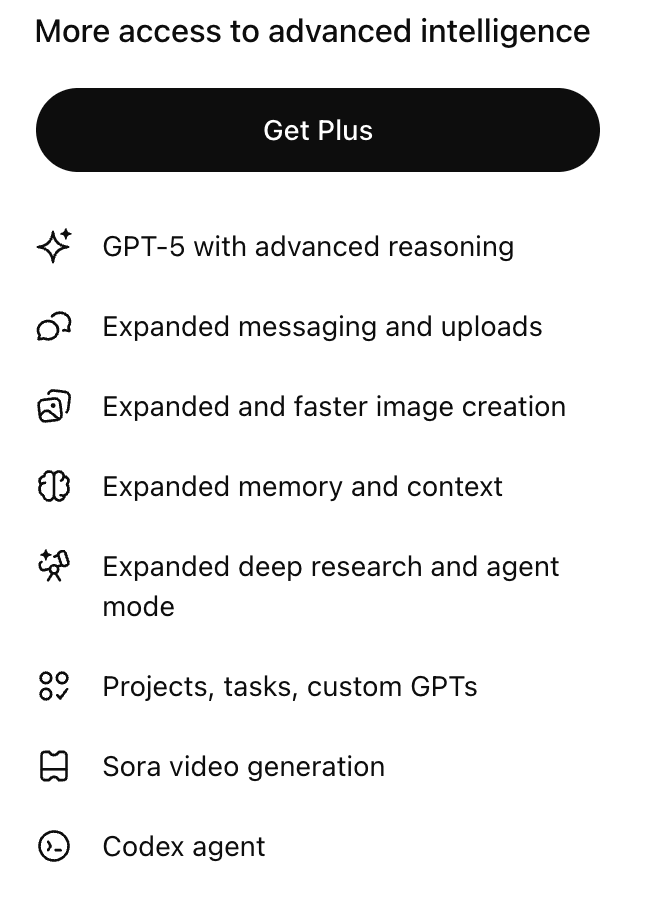
How ChatGPT Fits Into Your Writing Workflow
Here’s how most writers use it effectively:
- Ask ChatGPT for an outline — not the full article.
- Let it generate the first draft quickly.
- Then you rewrite and refine the parts that matter.
- Finally, use Humanize AI Text to smooth the tone and remove the robotic feel.
And if your content needs to rank, you then run the draft through AISEO for keyword alignment, entity coverage, search intent matching, and topical depth.
It’s not just about writing faster — it’s about thinking faster.

Pricing
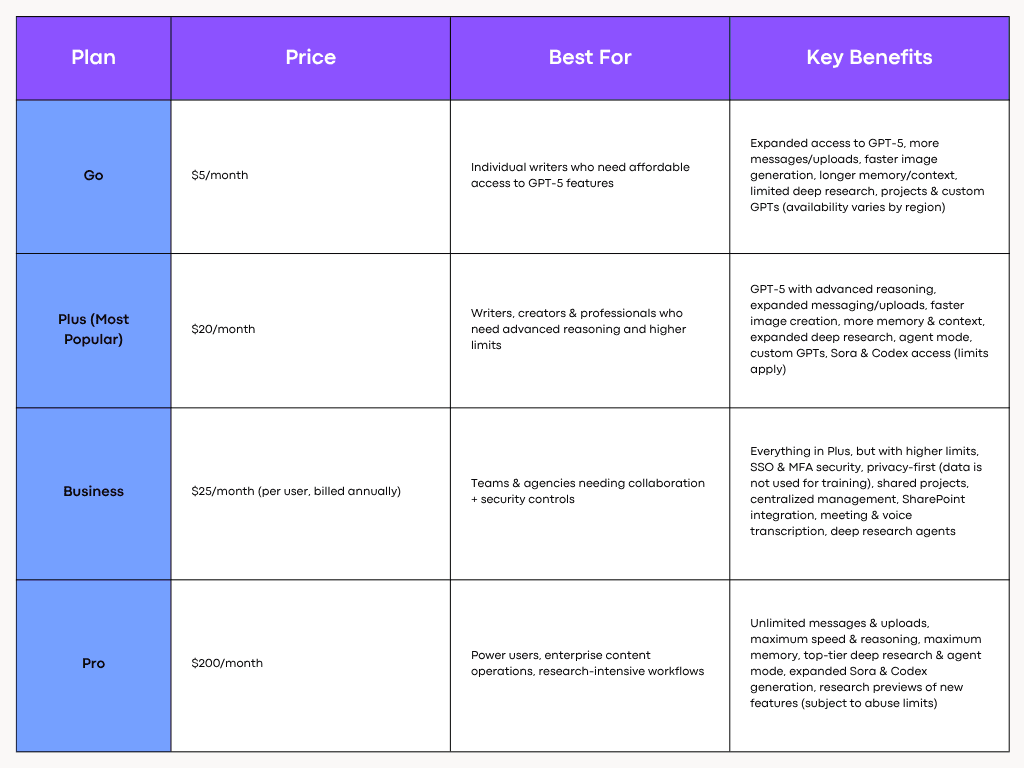

4) Grammarly — Enterprise-Grade Polish & Consistency
Once your article is structured, optimized, and humanized, Grammarly becomes the final tool that turns a good draft into client-ready writing. It’s not just about fixing typos—it’s about maintaining tone, flow, and consistency across everything you publish.
If you write often, you know how easy it is for your tone to slip between paragraphs. Grammarly helps you keep your writing clean, confident, and on-brand. Whether you’re crafting SEO blogs, outreach emails, or social media posts, Grammarly gives your words the professional polish readers subconsciously trust.

Where Grammarly Helps You Most
You’ll feel the biggest impact when you use Grammarly as your finishing layer. It cleans up awkward phrasing, trims unnecessary words, and ensures your sentences flow naturally.
Grammarly also adjusts tone automatically—so your writing can sound friendlier, more formal, or persuasive depending on what your readers expect. If you manage a brand or team, its style guide feature ensures everyone writes with the same voice and vocabulary, maintaining a unified tone across your website, blogs, and emails.

Key Features That Matter Most
Tone & Clarity Control: Grammarly identifies when your writing sounds uncertain, overly wordy, or robotic. It gives real-time suggestions that make your text punchier and easier to read.
Style Guides for Teams: If you collaborate with other writers, you can upload your brand’s tone rules, key terms, and writing preferences. This ensures every writer’s work feels cohesive and professional.
Grammar & Engagement Insights: Grammarly doesn’t just correct mistakes—it scores your writing’s clarity, delivery, and engagement. You can instantly see how polished your content is before publishing.
Everywhere Access: Install Grammarly on Chrome, Docs, Word, or your CMS—it follows you wherever you write.
Pricing


Grammarly doesn’t write for you—it elevates what you’ve already written. When paired with AISEO for SEO optimization and Humanize AI Text for tone refinement, Grammarly ensures your final draft isn’t just accurate—it’s powerful, persuasive, and professional.
5) QuillBot — Paraphrasing, Summarizing & Citations
QuillBot is one of the best AI writing tools to keep in your workflow if you often rewrite similar ideas, update older articles, or need to explain content in different ways without losing meaning. While it doesn’t replace your main drafting tool (like ChatGPT or AISEO), QuillBot is extremely useful as a precision editing tool — especially when you need to rewrite, condense, or expand specific paragraphs while keeping your tone and message intact.
Where most paraphrasing tools simply swap words or shuffle sentences, QuillBot actually maintains meaning while producing cleaner, smoother, more varied sentence structures. This is especially helpful when writing SEO content, product descriptions, academic papers, or social posts where your wording needs to feel fresh and original — even when conveying the same idea.
You’ll also appreciate QuillBot if you work with research-based content. Its Citation Generator and Summarizer save a ton of time when pulling insights from articles, PDFs, or long studies.

Where QuillBot Helps You Most
- Rewriting repetitive or robotic-sounding text into something clearer and more natural
- Summarizing long articles, reports, transcripts, or YouTube scripts into digestible insights
- Refreshing old blog posts to avoid duplication or keyword stuffing
- Creating variations of copy for social media, paid ads, FAQs, or product pages
- Generating accurate citations for academic or credibility-heavy content
If you’ve ever looked at a paragraph and thought “This is technically correct but it’s not hitting,” QuillBot solves that problem instantly.
Key Features That Improve Your Writing Workflow
1. Paraphraser with Multiple Modes
Rather than forcing one rewriting style, QuillBot gives you selectable tones and sentence restructuring variations — from formal to simple, creative, and more. This allows you to preserve intention while adapting to different audiences (blog readers, academics, customers, etc.).

2. Summarizer
When you're working with large sources like research papers, QuillBot’s Summarizer condenses them into clear, readable summaries while preserving the key points. It’s ideal for intros, abstracts, or briefing yourself before writing.

3. Citation Generator
Paste a link, DOI, or reference and QuillBot instantly formats citations in MLA, APA, Chicago, and more. Useful when you’re writing thought leadership or academic content where sloppy citations can hurt credibility.

4. Plagiarism Checker
If your workflow includes rewriting or adapting existing sources, QuillBot ensures your final text is unique — which is especially valuable when creating SEO content at scale.
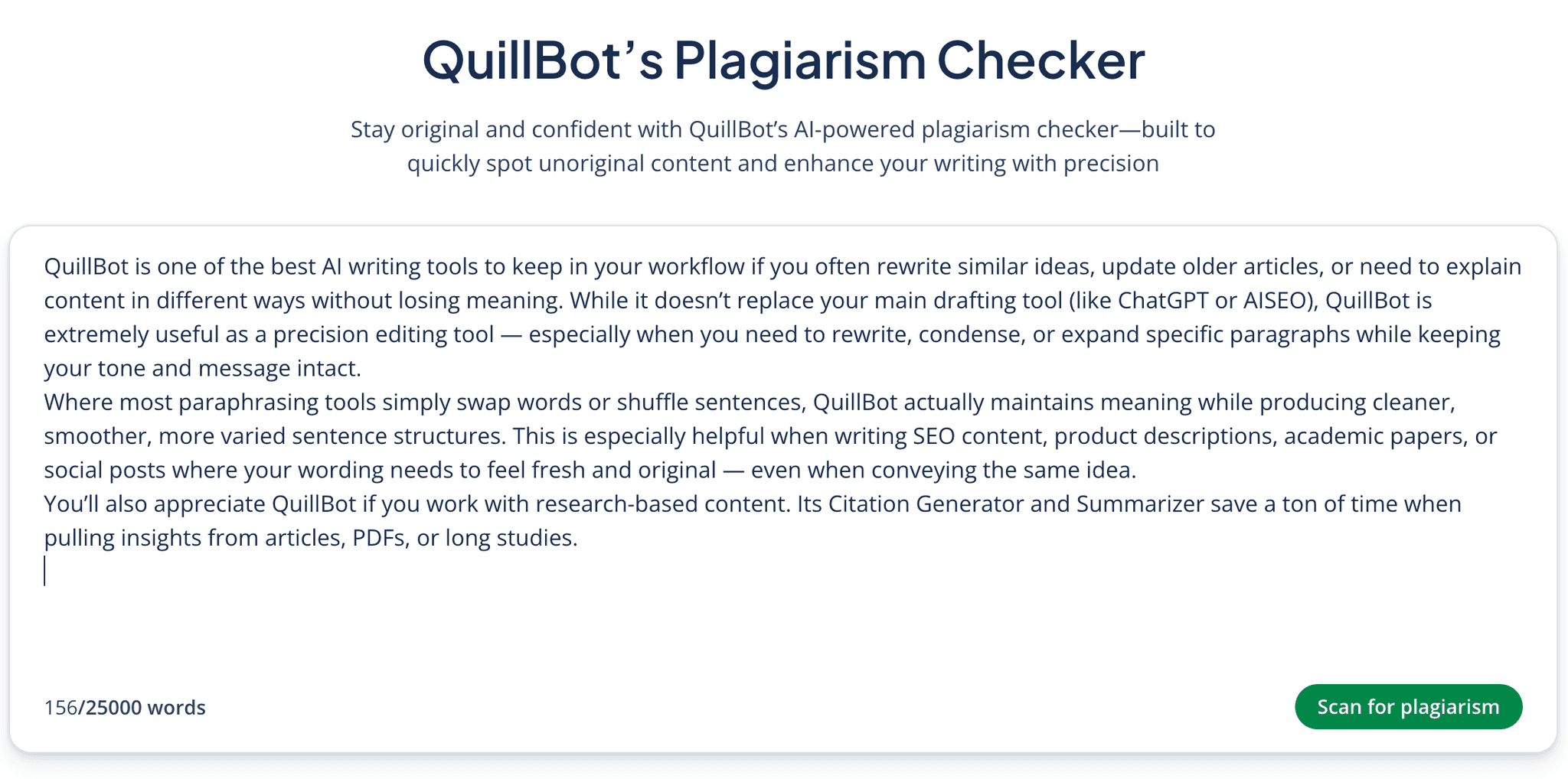
Pricing


Conclusion
Choosing the best AI writing tools isn’t about collecting as many tools as possible — it’s about building a workflow that actually supports the way you write. You don’t need complexity. You don’t need 12 different apps. You just need a system that helps you think clearly, draft efficiently, refine naturally, and publish confidently.
If your goal is SEO performance, AISEO should be your anchor. It ensures your content has the structure, depth, and topical alignment that Google actually rewards.
If your drafts still sound a little too “AI neat,” then Humanize AI Text is where your voice comes to life. It smooths tone, fixes unnatural rhythm, and ensures your language feels real, relatable, and ready for readers (and for rankings).
If you need speed, flexibility, and idea generation, ChatGPT is your drafting and repurposing partner. It helps you move from blank page to structured draft in minutes instead of hours.
And when you get to the polish stage, Grammarly and QuillBot make refinement easy — whether you’re clarifying, correcting, tightening, or paraphrasing.
Used together, these tools don’t just make writing faster. They make writing better.
The real advantage isn’t that AI writes for you — it’s that it allows you to spend more time on what actually matters:your ideas, your message, your expertise, and your impact.
Your voice stays yours. The tools just help you deliver it at scale.
Frequently Asked Questions About Best AI Writing Tools
1. What makes an AI writing tool “the best”?
The best AI writing tools don’t just help you write faster — they help you write better. You should be able to generate ideas, structure your content logically, maintain your unique voice, and publish content that sounds human and performs well in search results. The strongest tools also allow you to refine tone, avoid robotic phrasing, and ensure clarity and originality. What separates truly great tools from average ones is how well they fit into your workflow, not just how many features they claim to have.
2. Can AI writing tools replace human writers?
Not realistically — and that’s actually a good thing. AI handles drafting, summarizing, outlining, and rewriting extremely well, but you bring experience, insight, and judgment. The best AI writing workflow is you + AI, not AI instead of you. You provide the ideas and perspective; the tools help you execute faster, cleaner, and more consistently.
3. Are AI writing tools good for SEO?
Yes — as long as you use tools that are built for SEO specifically, such as AISEO. These tools analyze top-ranking competitors, identify the keywords and topics required to rank, and help you structure your content to match search intent. The key is not to generate content blindly; you need an SEO-aligned framework before writing.
4. Will Google penalize AI-written content?
Google does not penalize content simply because it comes from AI. What Google penalizes is low-quality, generic, repetitive, or unhelpful content — which just happens to be a common symptom of unedited AI text. If you produce content that is helpful, well-structured, and human-sounding (e.g., via Humanize AI Text), you’re safe and competitive in search.
5. How do I make AI content sound more natural?
You’ll want to run your draft through a humanizing tool. Tools like Humanize AI Text rewrite your content so it flows like natural human writing: varied sentence length, conversational tone, purposeful transitions, and emotional cadence. Think of it as the difference between reading a Wikipedia page and hearing someone explain something clearly in person.
6. What order should I use these tools in?
A proven, efficient workflow is:
- ChatGPT → for brainstorming, research summaries, and first drafts
- AISEO → for SEO structure, topical depth, and content scoring
- Humanize AI Text → to remove robotic language and create natural tone
- Grammarly → to polish clarity and correctness
- QuillBot → to fix repetitive sentences where needed
This prevents you from wasting time rewriting or back-tracking later.
7. How do I keep my brand voice consistent with AI?
Start by saving 3–5 examples of your ideal tone. Then feed them to:
- ChatGPT (as a reference tone)
- AISEO’s Brand Voice settings
- Grammarly’s Style Guide
This teaches your tools how you sound so everything aligns naturally over time.
8. Can AI writing tools help with multilingual content?
Yes, especially AISEO and Humanize AI Text, which support dozens of languages. This is helpful when you're building topical authority across regions or translating content for international markets. However, you should still review translations for cultural nuance — AI handles language well but not context perfectly.
9. What if my AI content gets flagged by AI detectors or Turnitin?
This usually means your writing still follows AI sentence patterns — predictable rhythm, repeated phrasing, or symmetrical sentence structure. Using Humanize AI Text solves this because it rewrites content structurally, not just word-by-word. After conversion, your content reads as human-generated, original, and non-detectable.
10. Which tool should I start with if I’m new?
Start with ChatGPT + Grammarly. Once you’re comfortable:
- Add AISEO when SEO becomes a priority
- Add Humanize AI Text when tone becomes a priority
- Add QuillBot when rewriting becomes a priority
This keeps your workflow efficient and affordable.
11. Can AI writing tools help me create long-form blogs consistently?
Yes. Tools like AISEO generate structured long-form content based on real search patterns. If you pair that with ChatGPT’s ideation and Humanize AI Text’s polishing, you can reliably produce blogs between 1,500–3,000+ words that feel natural and rank well. The structure and depth matter more than the length itself — and these tools help ensure both.
12. How do I humanize AI content without losing SEO keywords?
When using Humanize AI Text, use the Freeze Keywords feature. This locks important terms while the surrounding sentence structure is rewritten. Your content stays easy to read without losing topical relevance — which is essential for ranking.
13. What’s the difference between rewriting and humanizing?
Rewriting just changes words. Humanizing changes tone, flow, rhythm, and pace.
If rewriting is like replacing blocks, humanizing is like re-crafting the paragraph from scratch to sound human.
That’s why Grammarly + QuillBot are useful for refinement, while Humanize AI Text is better for complete naturalization.
14. Are AI writing tools safe to use for client work?
Yes — as long as you choose tools that do not store or reuse your content. Humanize AI Text and Grammarly both prioritize privacy. ChatGPT Business and Enterprise also include strong data privacy protections.
15. How do I avoid sounding like every other AI user?
You inject your own perspective. Use original:
- Examples
- Observations
- Personal experiences
- Industry-specific insights
- Data points
- Contrarian opinions
AI gives you the wording — you give the writing personality.

About Dilyar Buzan
Founder & CEO at AISEO
Artificial Intelligence - University of Amsterdam
LLM engineer
